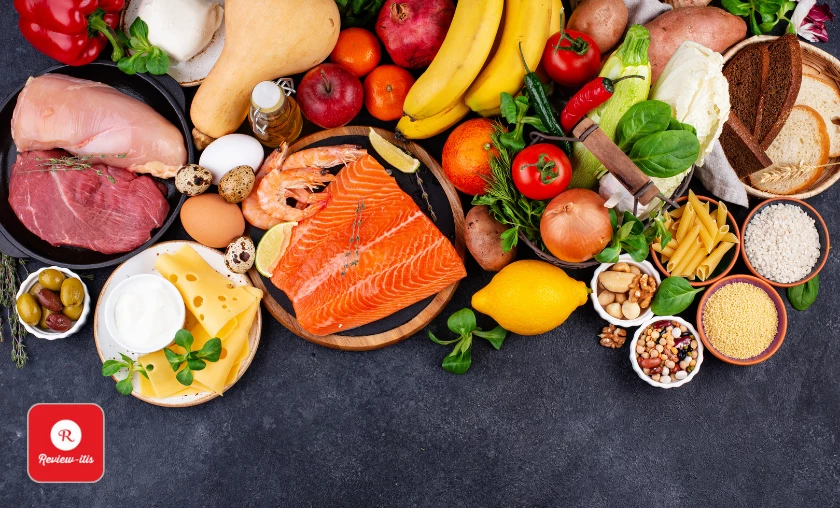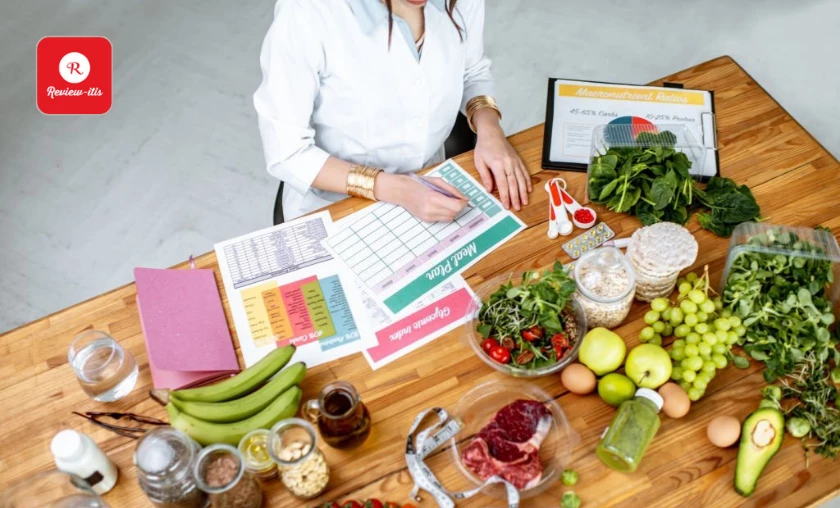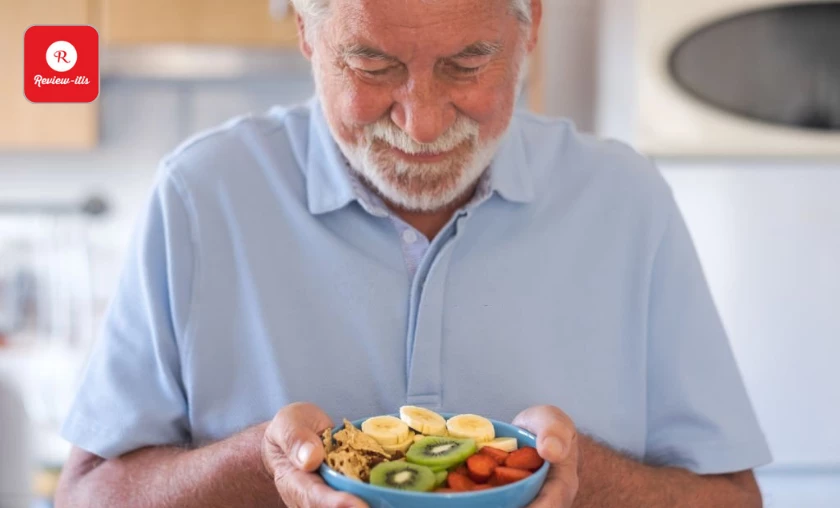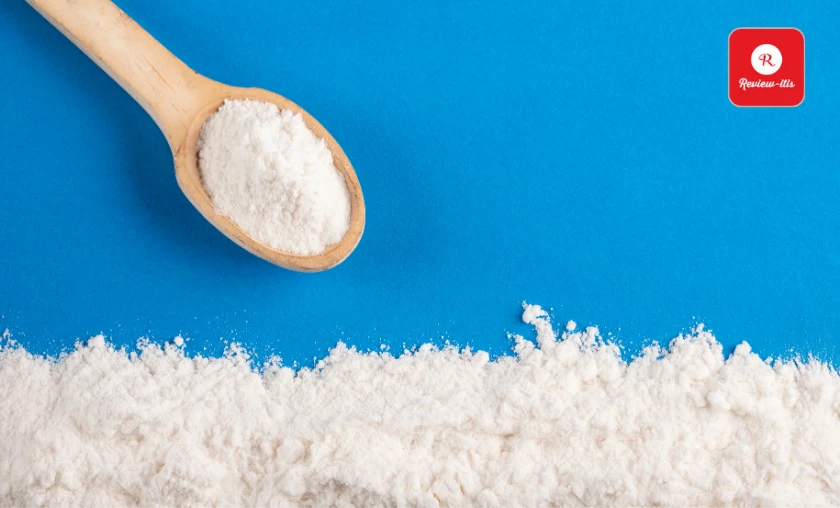Hey, Healthy! Are you getting older and feeling like your nutrition needs are changing? Here is the answer of your query about healthy eating. Let’s explore…
I totally understand! Unfortunately, a lot of seniors don’t eat as well as they should, which can lead to malnutrition, vitamin deficiencies, and even chronic diseases. But don’t worry! The good news is that it’s never too late to start developing better nutrition habits based on the latest healthy eating guidelines. By following a balanced-diet meal plan, you can reduce your risk of getting sick and stay active and independent for longer. Trust me, it’s worth it!
Table of Contents
Here’re Some Steps You Can Take Now to Reap the Benefits of Healthy Eating.

1. Eat more whole foods, and limit processed foods.

Let’s talk about whole foods! These are the kinds of foods that you can buy and eat without worrying about a bunch of extra processing. They’re either minimally processed or not processed at all, so you’re getting all the good stuff that nature intended. Some examples of whole foods include:
- Fruits & vegetables (fresh, frozen, unsweetened, dried)
- Meat, poultry, & seafood
- Nuts, seeds, & beans
- Whole grains (e.g., brown rice & quinoa)
- Plain yogurt
- Eggs
Have you ever heard of processed foods? They’re the opposite of whole foods! Processed foods are cooked, roasted, ground, boiled, pasteurized, or separated to make them cheaper, safer, or shelf-stable. But here’s the thing: processed foods are designed to be super tasty and convenient, but they’re often packed with salt, sugar, refined grains, starches, preservatives, artificial colors, and flavorings. Plus, they tend to be low in nutrients and high in calories (aka “empty calories”). Some examples of processed foods include potato chips, candy, cookies, and frozen meals.
So, what should you be eating instead? The Healthy Eating Plate guidelines from the Harvard T.H. Chan School of Public Health suggest filling half your plate with veggies, a quarter with whole grains, and the rest with lean protein like poultry, fish, and beans. Trust me, your body will thank you!
2. Create a healthy-eating meal plan ahead of time.

Do you ever feel exhausted or overwhelmed, and the thought of cooking a healthy dinner is the last thing you want to do? Trust me, I understand! But don’t worry, there’s a solution: meal planning!
When planning our meals in advance, we’re better prepared to make smart choices, even when tired or stressed. And bonus, meal planning can actually help us save money since we’re only buying the foods we need and reducing waste.
So, to create a healthy meal plan, start by finding nutritious recipes you’ll enjoy, and then make a shopping list. There’re some great resources out there for healthy recipes, including:
- MyPlate Kitchen, a recipe resource from the USDA
- SNAP-Ed Recipes featuring simple SNAP-friendly meal ideas
- Healthy Aging Recipes from EatingWell Magazine
Feeling like you need more time for meal planning? It happens to the best of us! Luckily, there’s a solution that can make healthy eating a lot more convenient: meal kit delivery services.
By subscribing to a meal kit delivery service, you’ll receive nutritious ingredients and recipes or even pre-prepared meals right to your doorstep. This way, you can skip the grocery store and meal planning altogether without sacrificing your healthy eating goals. With a variety of options available, you can choose a meal kit service that fits your dietary needs and taste preferences.
So, if you’re looking for a convenient way to eat healthily, consider investing in a meal kit delivery service!
3. Drink water with your meals and eat water-rich foods.

Water is essential for the proper functioning of our bodies. It lubricates our joints, regulates body temperature, and helps transport nutrients throughout our body. However, it’s not uncommon for many older adults to not drink enough water, which can lead to dehydration. Additionally, certain medications can also impact your hydration levels.
To maintain healthy aging, it’s crucial to stay hydrated. As a general rule, aim to drink one-third of your body weight in ounces of fluids each day (e.g., if you weigh 150 pounds, try to drink 50 ounces of water daily). If you find that challenging to consume enough fluids, you can try incorporating water-rich foods into your diet. These can include watermelon, cucumbers, lettuce, strawberries, tomatoes, celery, low-sodium soups, broths, and stews.
Remember, staying hydrated is an essential part of healthy aging, so make sure to prioritize your daily fluid intake!
4. Focus on getting enough protein to prevent muscle loss.

As we age, our bodies lose up to 50% of our muscle mass between the ages of 40 and 80. However, dietary protein can help us maintain and build muscle. That’s why healthy eating guidelines emphasize getting enough of this nutrient. If you weigh 150 pounds and aim to consume 68-83 grams of dietary protein daily.
To get the most benefit, spread your protein intake over several meals. Aim for 25-30 grams at each meal, depending on your weight. There are many excellent sources of dietary protein, including dairy products, meat, seafood, and poultry. If you follow a mostly plant-based diet, whole grains, seeds, nuts, beans, and lentils are other protein-rich options to consider.
5. Eat fiber-rich foods.

Getting enough fiber in our diet is essential for maintaining digestive health and reducing the risk of chronic diseases such as heart disease, type 2 diabetes, & certain cancers. Unfortunately, studies show that about 95% of adults need to meet their recommended daily intake of fiber.
To ensure you’re getting enough, men should aim for 30 grams of fiber daily, while women should aim for 21 grams if they’re 51 or older. Good sources of fiber include a variety of plant-based and whole-grain foods such as:
- Bananas
- Black beans
- Apples
- Quinoa
- Whole-grain bread
- Cabbage
- Almonds
6. Watch your sodium intake.

Excessive intake of dietary sodium can lead to fluid retention in the body, causing high blood pressure. This puts extra strain on your heart and may lead to heart failure, stroke, and kidney disease.
To prevent this, the American Heart Association suggests that most adults, particularly those with high blood pressure, should consume no more than 1,500 mg of sodium per day. You can reduce your sodium intake by avoiding processed foods and seasoning your food with herbs and lemon juice instead of salt.
Looking to make healthy eating more affordable? Consider the Supplemental Nutrition Assistance Program (SNAP).
- Not eating a healthy diet can increase your risk of malnutrition, vitamin deficiencies, and a variety of chronic diseases.
- To stay healthy as an older adult, it’s important to prioritize whole foods, sufficient protein, and limited sodium intake in your diet.
- Looking to make healthy eating more affordable? Consider the Supplemental Nutrition Assistance Program (SNAP).
Creating healthy-eating meal plans with SNAP

If you are an older adult on a budget, it can be difficult to afford fresh, nutritious foods, which are often more expensive than processed, packaged foods. However, there are resources available to help, such as the Supplemental Nutrition Assistance Program (SNAP).
With a minimum monthly benefit of $20, SNAP can make purchasing healthy foods and maintaining a healthy diet easier. Flora Wallace’s story is a great example of how SNAP can make a difference in the lives of older adults, allowing them to purchase the nutritious foods they need to stay healthy.
Conclusion
Maintaining healthy eating habits as you age is crucial for overall health and wellness. Focusing on whole foods, getting enough protein, and limiting sodium intake can help reduce your risk of chronic diseases and maintain your quality of life.
Remember to stay hydrated, eat plenty of fiber, and consider seeking assistance from programs like SNAP to make healthy eating more affordable. You can enjoy a healthier & more vibrant future with simple diet and lifestyle adjustments.
For more amazing articles related to Health, Checkout Now with a click
To read more similar articles, click here.
Thanks for visiting our Website. If you appreciate our work, kindly show us some support in our comments section. 🙂